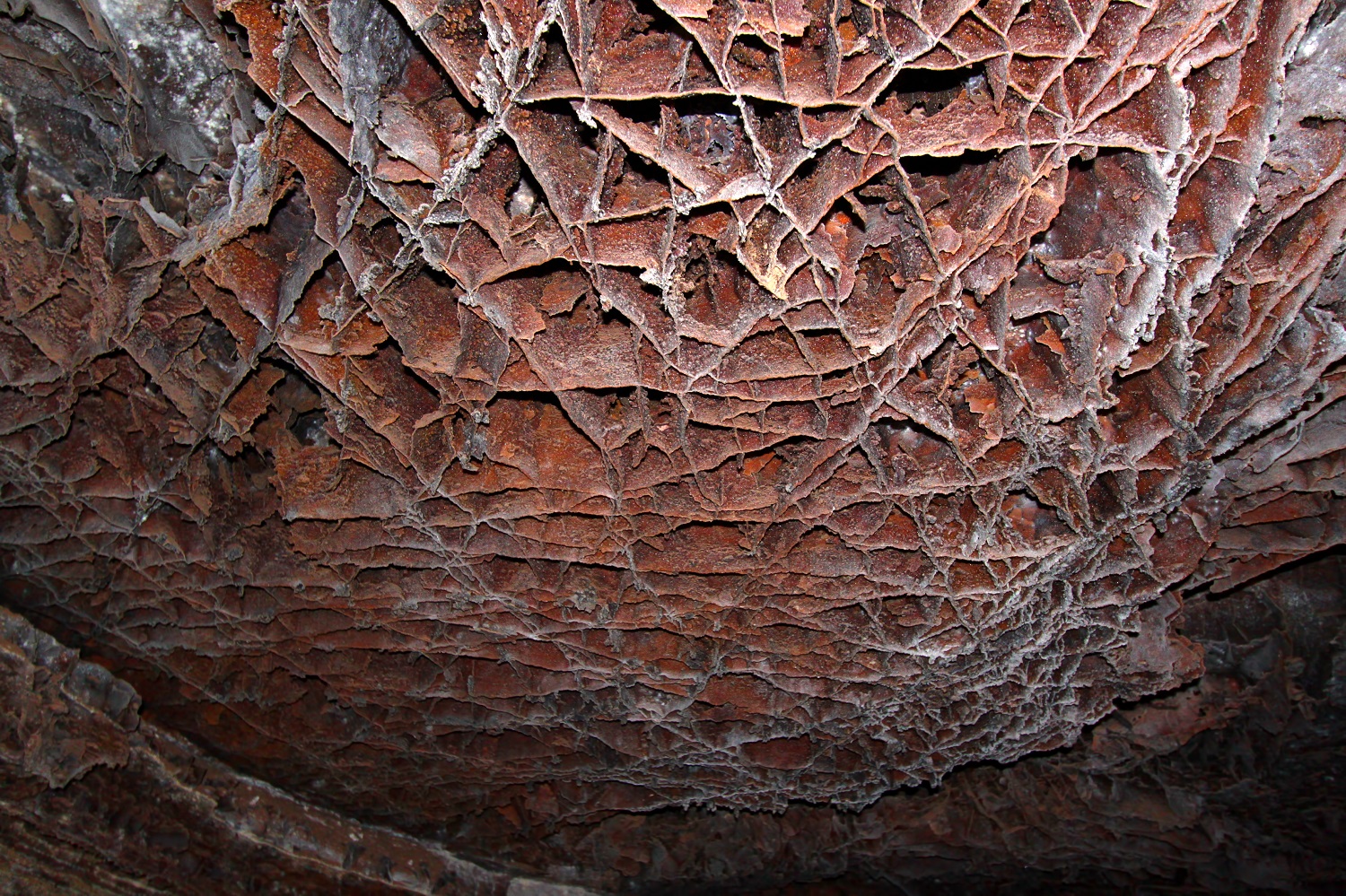South Dakota”]
One of the World’s Oldest Caves.
Wind Cave National Park
The leading example of boxwork cave walls in the United States.
Wind Cave National Park is a nearly 34,000 acre park protecting two worlds – one above the land and teeming with wildlife, the other below the surface – one of the world’s oldest caves.
Below the ground, it is one of the densest cave systems in the world (measured by passage volume per cubic mile). The bedrock walls of Wind Cave have boxwork, a honeycomb pattern of thin blades of calcite that has formed on the dolomite rock in the middle and lower levels of the cave. The boxwork at Wind Cave is perhaps the most abundant and well-formed in the world. The cave is also one of the oldest in the world, with portions over 300 million years old.
Ranger guided cave tours are available most days. The cave is ordinarily around 53 degrees, so dress appropriately. There are currently three walking tours (ranging between easy and strenuous) and two specialty tours (the Candlelight Tour and Wild Cave Tour) which range between strenuous and very strenuous. When there are problems with the cave elevators, an abbreviated Natural Entrance Tour is available on weekdays only which requires descending/ascending 155 stairs.
Above the cave, the national park protects the largest natural mixed grass prairie remaining in the United States. It is home to bison, elk, pronghorn, coyote, prairie dogs and the black-footed ferret, among other animals.
The bison herd here is one of only four free roaming and genetically pure herds in North America. The herd was reintroduced with animals from teh New York Zoological Society, Yellowstone National Park and later supplemented with a bull from Theodore Roosevelt National Park. It is considered genetically pure because there is no evidence of hybridization between the bison and cattle. Genetic testing surveys of herds typically find up to 95% of animals with cattle DNA. There is now a herd of 250-400 American bison in the park.
Open / Close / Reopening Status of Wind Cave National Park due to Coronavirus (COVID-19)
Last Updated: May 2, 2020
History
It was the 7th National Park (established in 1903 by President Theodore Roosevelt) and the first cave to be protected as a national park.
Distance from Nearby Major Cities:
Rapid City, SD: 60 miles (1 hour)
Sioux Falls, SD: 400 miles (6 hours)
Denver, CO: 350 miles (5.5 hours)
Busiest Months (Percentage of Annual Visits)
Don’t Miss:
- Cave Tours
- Hiking
[/list]
Other Activities
Hiking Trails:
There are more than 30 miles of hiking trails through the mixed-grass prairie and ponderosa pine forest. There are several easy trails that are great for families. The Rankin Ridge trail is a one mile hike to the highest point in the park. A few moderate and strenuous trails cross prairie dog towns. The Centennial trail, a 6 mile portion of the 111 mile long trail through the Black Hills, also crosses through the park. Off-trail hiking is also allowed.
Camping
Elk Mountain Campground is located on the national park. It is $18 a night per site when water and toilet facilities are available and $9 a night in the late fall through early spring when there is no water. Overall, there are 75 sites. Sites are available that can accommodate a recreational vehicle. Reservations are not accepted – it is first come first serve. Backcountry camping is also available with a free permit frmo the visitor center.
Some Hotels and Other Lodging Options:
Custer and Hot Springs provide the closest lodging options. Additional places to stay can be found in Rapid City.
Roundtrip Flights to Rapid City:
[tp_in_our_city_fly_shortcodes destination=RAP title=”” limit=15 paginate=false stops=0 one_way=false off_title=true subid=”” currency=”USD”]
Shop:
Nearby:
Jewel Cave National Monument, 13 miles west of Custer, is the third longest cave in the world. It is open year round and the park offers three tours of the cave. It was declared a national monument in 1908.
Custer State Park is a 71,000 acre park in the Black Hills. The scenic drives are popular, with an 18-mile Wildlife Loop Road often stopped by the 1,300 bison herd roaming the park. Trout fishing is also popular with 182 acres of water contained in four mountain lakes.
